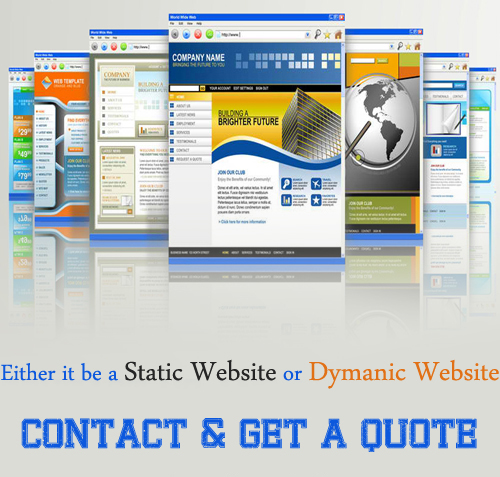Static Website design vs Dynamic Website Design
If you already have a website created for your business or if you are seriously considering change up the current layout; it is never late to do so but the question is – Do you really need to change it? The need of website redesign might come up if your current site just isn’t getting enough hits or if you are possibly in the rebranding process for your company. In either way, you have to decide what kind of website design you should use; one that is best coordinated and compatible with your budget and target audience. You will also need to decide whether you want to opt for a cost-efficient static website design or a broader dynamic design.
Below are some basic aspects about each kind of design to highlight what they’re made of:
Static website design:
- Created entirely using only HTML and CSS.
Each webpage of the site is a separate document that does not pull information from any databases or external files.
- Can only be edited by going into each specific web page document and altering the HTML code.
You must edit the complete code yourself using web editing software like Dreamweaver, or a simple notepad editor. Or, you can simply hire a web developer to make updates for you.
Dynamic website design:
- Created using more complex code (PHP, JQuery, JavaScript, etc.).
- Possesses much more functionality.
- Many dynamic designs can be controlled using a CMS.
- Can potentially make any changes to site without any knowledge of HTML or web editing software.
- Each webpage is generated from information stored in a database or external files.
- The website’s CMS directly modifies this information.
Though you may have already picked up the pros and cons of static and website designs with the listing of their components, the advantages and disadvantages of each are pretty cut and dry.
Static websites
Advantages:
- Website can be created quickly.
- Cost-efficient website development.
- Cost-efficient hosting.
Disadvantages:
- Content can grow old and outdated quickly without consistent updates.
- Requires someone experienced in website development and coding to make alterations.
- Website doesn’t offer as much functionality or user experience.
Dynamic websites
Advantages:
- Easy to make changes or updates to website.
- Increased website functionality.
- Easier updates can motivate more consistent content renewal, which brings back users to the site and increases SEO.
Disadvantages:
- Takes a little long time to develop website.
- Web hosting is more expensive.
Simply saying, dynamic website designs are more complex and expensive to create, but the infinite advantages offered can end up diluting the costs in the long-run. Suppose that your company’s website will need to offer users certain site functionality, such as an E-commerce system, discussion boards, or allowing users upload documents. In such case a dynamic web design or for much better performance, an E-Commerce Design might be a must.
As per the changing time, along with the prevalence of social media in virtually all areas of business, many companies are going towards implementing dynamic websites simply because of the richer experience it offers to its users. By optimizing a dynamic website design, you can boost the overall user experience and claim the appeal of your website to newcomers, which might, in turn, increase business and profits.
If you’d like to learn more about the benefits of dynamic website design or even if you’d like to look into getting a static website for your company, contact SEO To Web Design today – It will be our immense pleasure & honor to work on your project.


Thank you! When we make a wedding dacerotion, we try to do something personal, creative.We meet with the bride and groom many times for decide the design, the color and more We try to make each wedding unique